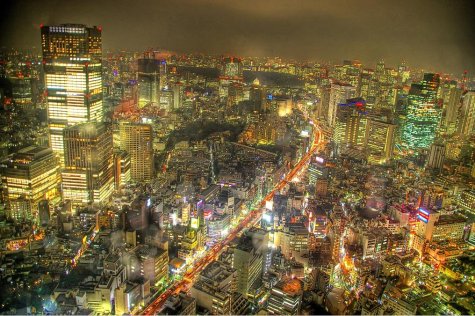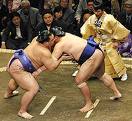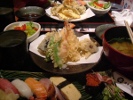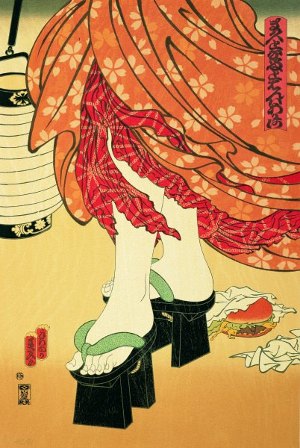Quoted/adapted from Patrick Smith, Japan: A Reinterpretation, originally published in 1997, and again, van Wolferen
Confucianism as reflected not in conventions and institutions regarded as Confucian but in those that reveal Confucian influence or propensities
Confucian social practice gone mad
Japan as a caste society was nothing new. The last family of shoguns — there were fifteen Tokugawa rulers before the end — merely took the feudal rigidities to their limits. They were Confucian fundamentalists. The Tokugawa were obsessed with edicts, decrees, prohibitions, gruesome punishments — everything needed to maintain a climate of terror. Edo punishments — like Islamic and Christian punishments, were brutal.
Moreover Edo maintained an immense network of enforcers — secret police, frontier guards, censors, undercover agents. Villages were organized into five-person groups: Each member was required to spy on the other four, each group on other groups. Still, there were roughly three thousand peasant uprisings during the Tokugawa centuries — once a month on average, though they gained in frequency as time went on.
Japanese society, like all Confucian societies, governed by shame
The Japanese are shamed when they transgress, for they have disgraced their household. But are there really people in the world who never feel the shame of guilt, who have no conscience? Loyalty can be a fine thing, but Japan’s notion of loyalty, loyalty that admits of no questions, led it into a world war. Hard work has historically been a matter of desperate necessity. As for respect of authority, it is better understood as obsequiousness bred of fear.
A clear picture of the past leads to a fundamental point about the Japanese, an understanding that changes everything. Once we recognize the conflict beneath the surface, we understand that group identity has had more to do with coercion and power than with tradition and culture. Among primitive societies, Japan is “advanced”; alone among advanced societies, Japan has remained primitive to the present day.
Japanese society as particular rather than universal
Meiji turned out to be nothing more than a transition from feudal absolutism to absolutism in 19th-century form. Japan remained a communal society — closed instead of open, particular instead of universal, a society of individuals who could cultivate no individual values. The contradiction made modern Japan what it is today — a place of immense but unrealizable dreams, relentless competition, and near-universal frustration.
Rote learning as a dependency, and this dependency as Confucian
Rote learning is the child’s next lesson in dependence. To think is an act of autonomy; to memorize or imitate the given is to rely upon authority. Rote learning is measured by an intensely competitive examination system. Exams are a typical feature of Confucian meritocracies. They are administered not at the conclusion of a course of study but as entrance requirements. The Chinese used exams to select bureaucrats.
The Japanese as unaware of the Confucian moral tradition
Soseki created many memorable characters who, like him, were caught in the desolate terrain between tradition and modernity. Botchan, the antic title character of his second novel, is a classic late-Meiji type — a brash, selfish upstart who considers himself much in the modern mold. He is impatient with the old ways but entirely unconscious of his dependence upon them. Confronted with others making their way in a changing world, he innocently concludes:
“The world seemed to be composed solely of imposters and schemers who were ever trying to scheme against, and impose upon, one another.” Botchan finds comfort in his family’s aging maid, an early example of the many women in modern Japanese fiction to represent the past preserved. Yoshiro Kato (a painter): “There is no unconscious in the Japanese anymore, no heart, no mind. Only the outside. The exterior is all that is there.”
MM: Cp. “no heart, no mind” with the Neo-Confucian schools of “heart” and “mind”; “Do not trust us, for we do not trust ourselves,” with the Confucian hsin i.
Similarly, an analogy between dispensing with the Feudal and Confucian legacies
In 1945 the Japanese wished to dispense with the feudal legacy. Considering where the feudal legacy had led, one can understand this. But people alienated from their past can lose themselves further by adopting someone else’s past. [MM: Cp. the adoption of Chinese tradition in both Korea and Japan.] And that is what the Japanese did after 1945: They cut themselves adrift, so producing in very short order their characteristic confusion and vacancy.

A certain self-loathing must lie buried in the way that Japan treats its invented others. Take the place of the Chinese in Japan’s past, for instance. “We will always feel inferior when we look toward the West, and always superior when we look to Asia.” One could easily accept this as true. Many Japanese certainly do. Since the restoration they have not been sure whether they are Asians or some murky concoction, such as “the Europeans of Asia.”







